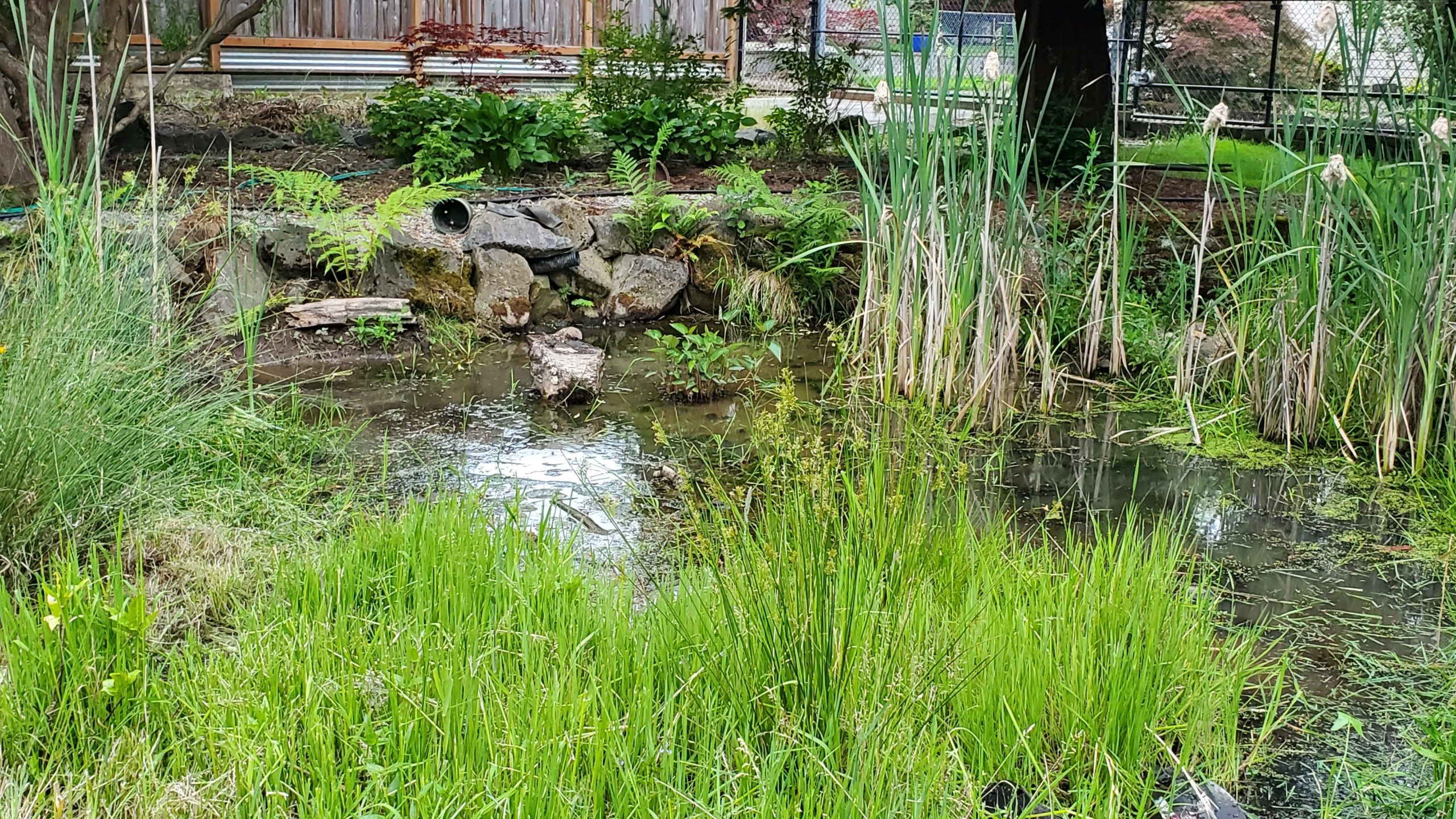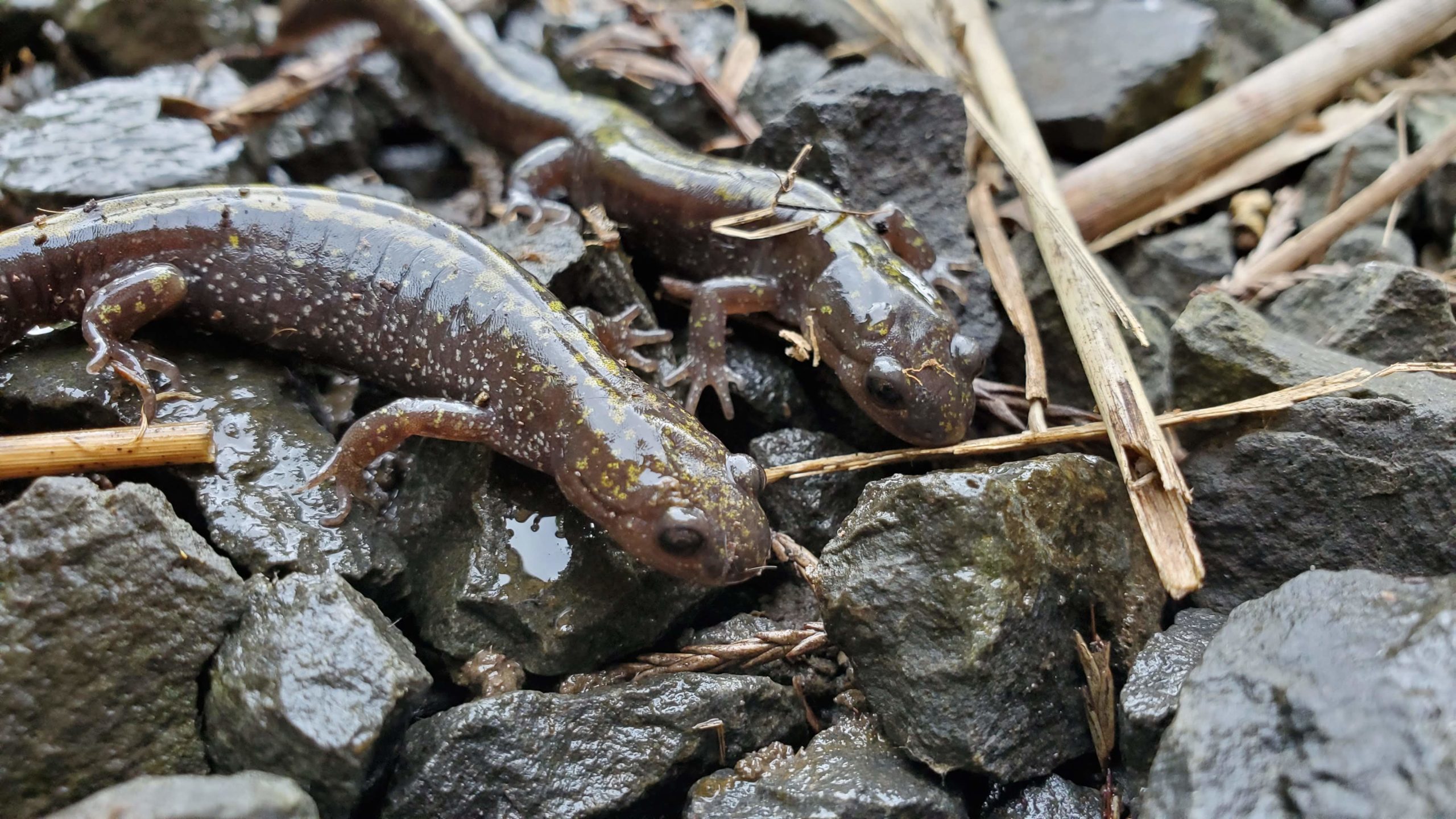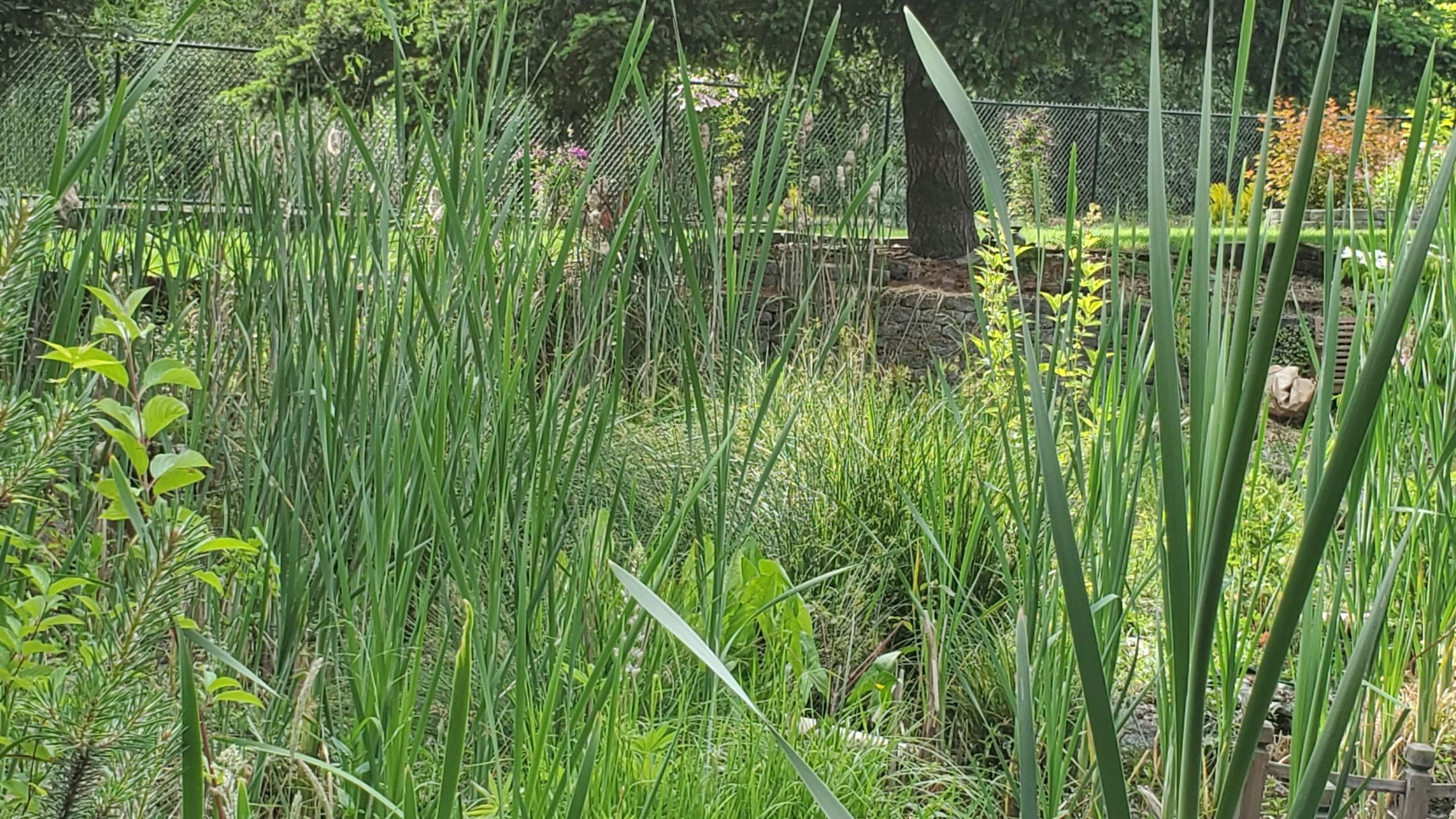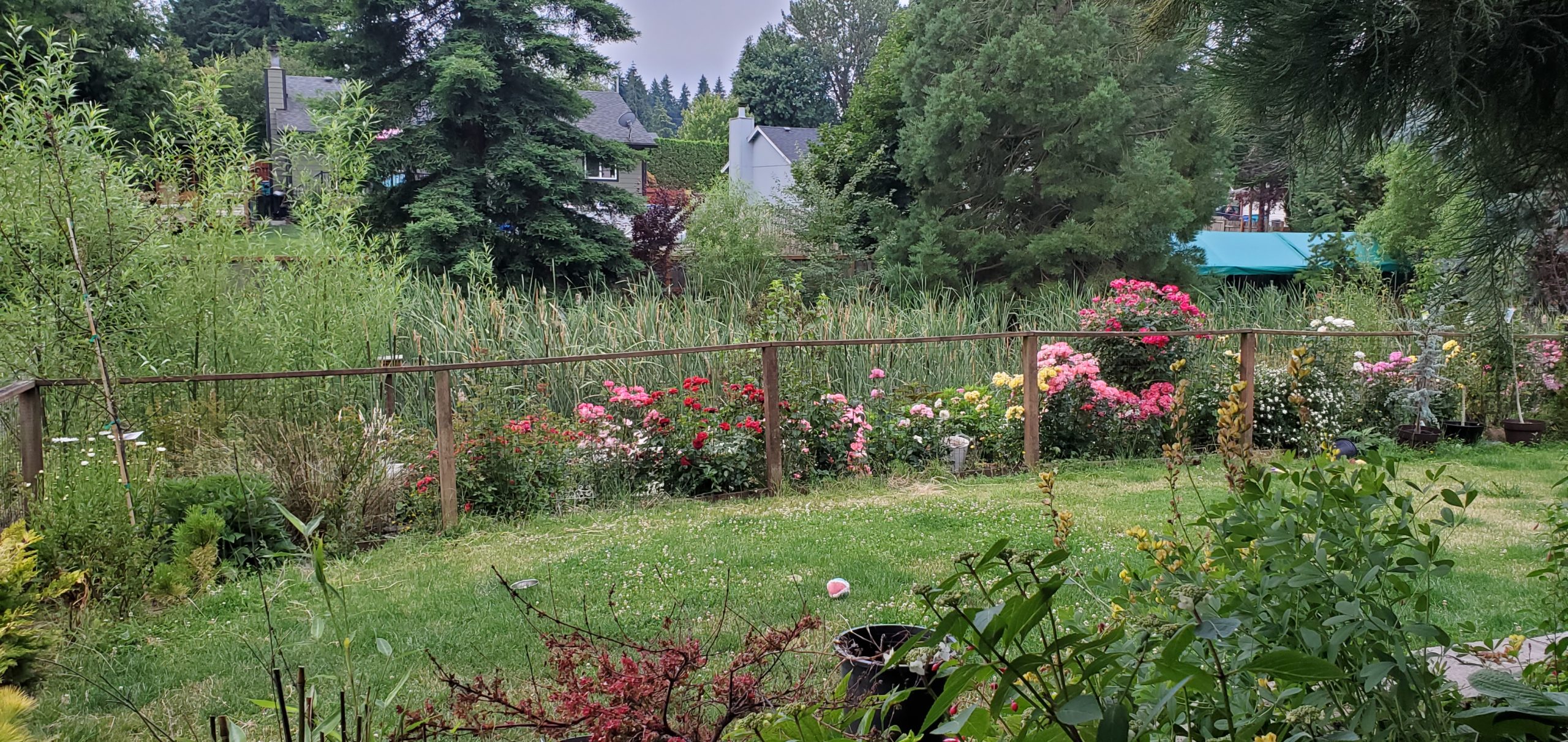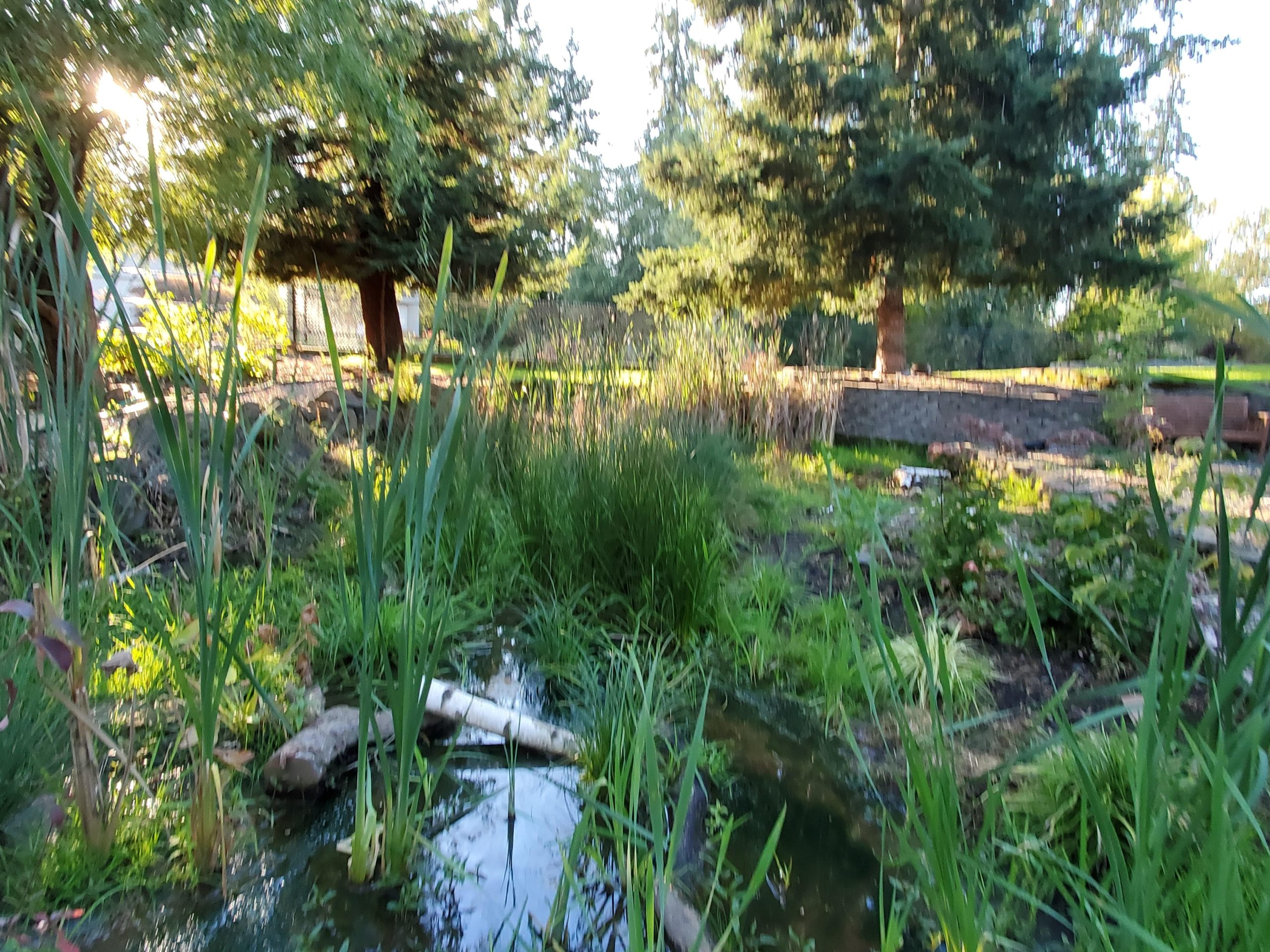Site Information: Ruth’s habitat in Vancouver is part to full sun to full shade, with dry to moist soil conditions
What inspired you to enroll in the Backyard Habitat Certification Program?
I was inspired to enroll in the Backyard Habit Certification Program after learning about the technical expertise offered to individuals participating in this program.
Having a yard that attracts and supports wildlife has always been important to me and any opportunity to learn more is always welcome.
How would you describe your habitat?
My .5 acre property has two distinct areas. The lower south facing part of the property consists of water runoff that eventually ends up in Salmon Creek. This wetland section is made up hundreds of cattails and native reeds. The creek then feeds a large pond filled with wapato and lined by native wetland plants and shrubs. This pond is regularly visited by hundreds of frogs as well as ducks, salamanders and dragonflies. It is completely pesticide free for the safety of all the wildlife visitors.
The northern part of the yard consists of a rose garden and a large number of specialty ornamentals and lawn. This area is also completely pesticide free and the expansive lawn is never watered or fertilized.
All 5 canopy levels are present. And there are bird feeders, bird baths and bird houses located throughout the property.
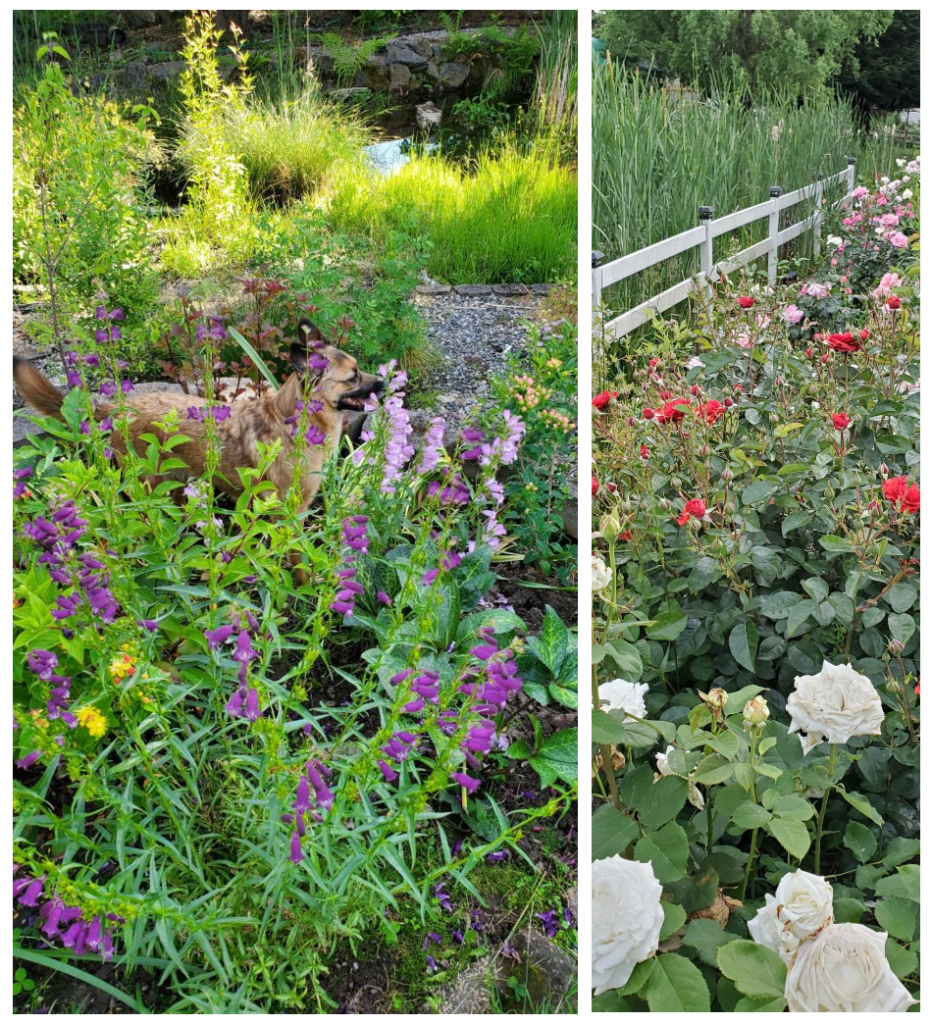
What are your top three favorite native plants and why do you love them?
- Wapato is one of my favorite plants due to the large, lush leaves that are always covered in Pacific Tree Frogs.
- Meadow Checkermallows which adorn the pond are cheery and bright and attract many bees.
- The Snowberry plant is another favorite due to the winter interest it offers with the bright white berries.
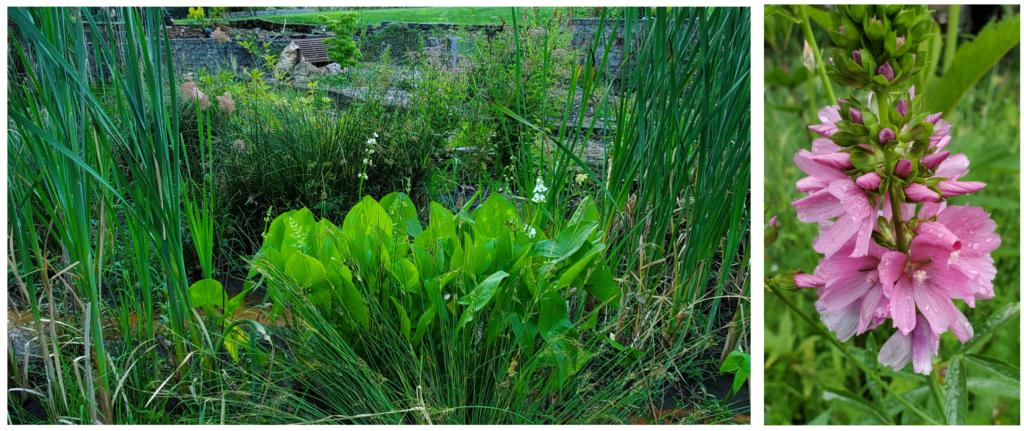
What changes have you observed as a result of creating habitat?
As a result of the wetland restoration I have seen birds such as Red Winged Blackbirds take up nesting in the creek area. And the increase in cattails means there is a lot of nesting material in the spring!
What were the two most significant challenges you encountered while creating habitat, and how did you address them?
The first and most significant challenge when I acquired this property 4 years ago was the robust, overgrown creek bed that was filled with reed canarygrass. This grass had so completely overtaken the area that only a few cattails were surviving. As this was a wetland area I knew the only management option was to manually control the grass. The first few years were spent pulling the grass in the spring when the ground was wet, and weed whacking the grass when the creek was drier. The seed bank can last 5 years so I wanted to ensure the bank did not continue to grow. And as a result, very few clumps of canary remain and I quickly pounce on them when they show up. And now the cattails are robust and have almost completely filled in the creek.
The second challenge has been a slightly sloped area that has soil so poor that it is overrun with creeping buttercup. Meadowfoam has been seeded to help compete, and now soil amendment is underway to make it less hospitable.
How do you enjoy your Backyard Habitat throughout the different seasons? What are its highlights in each season?
The most enjoyable aspect of the habitat is the ever changing pond. Every season is different, and every year it changes based upon the amount of rain received. In the winter it offers refuge to visiting ducks and raccoons. In the spring it comes to life with a cacophony of frogs. The summer brings brightly colored dragonflies.
Some years there is water year round, other years it dries out completely. The waxing and waning changes the appearance of the whole yard from year to year.
What part of your backyard habitat are you most proud of?
The wetland area is the area I am most proud of due to the immense physical labor that was required to restore it. And to see the natives taking a firm hold where there was once canary grass is a source of much pride for me.
